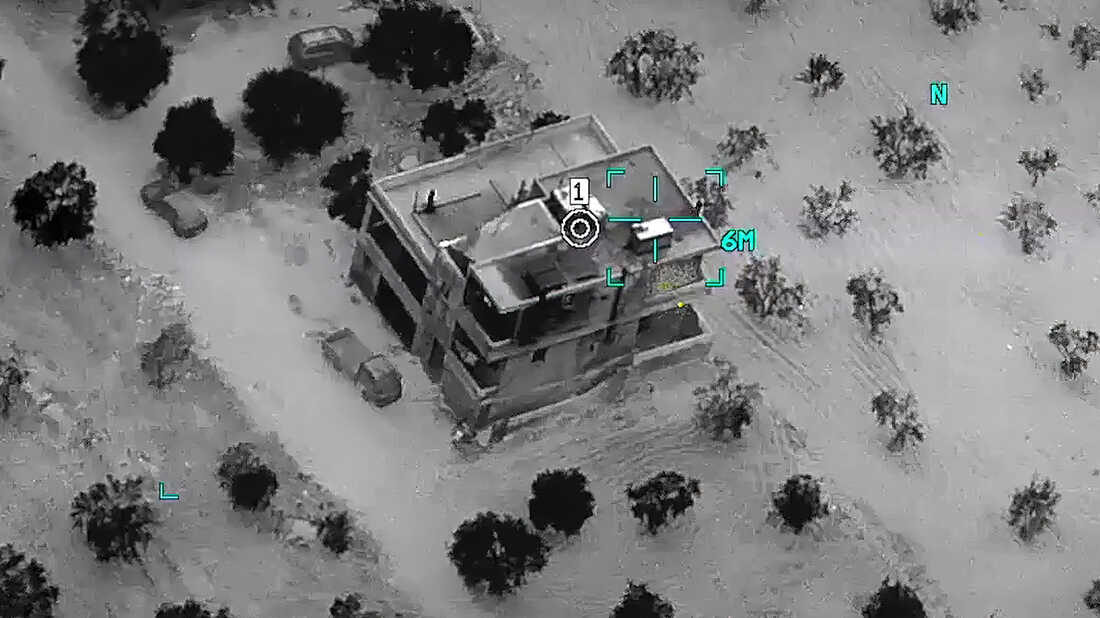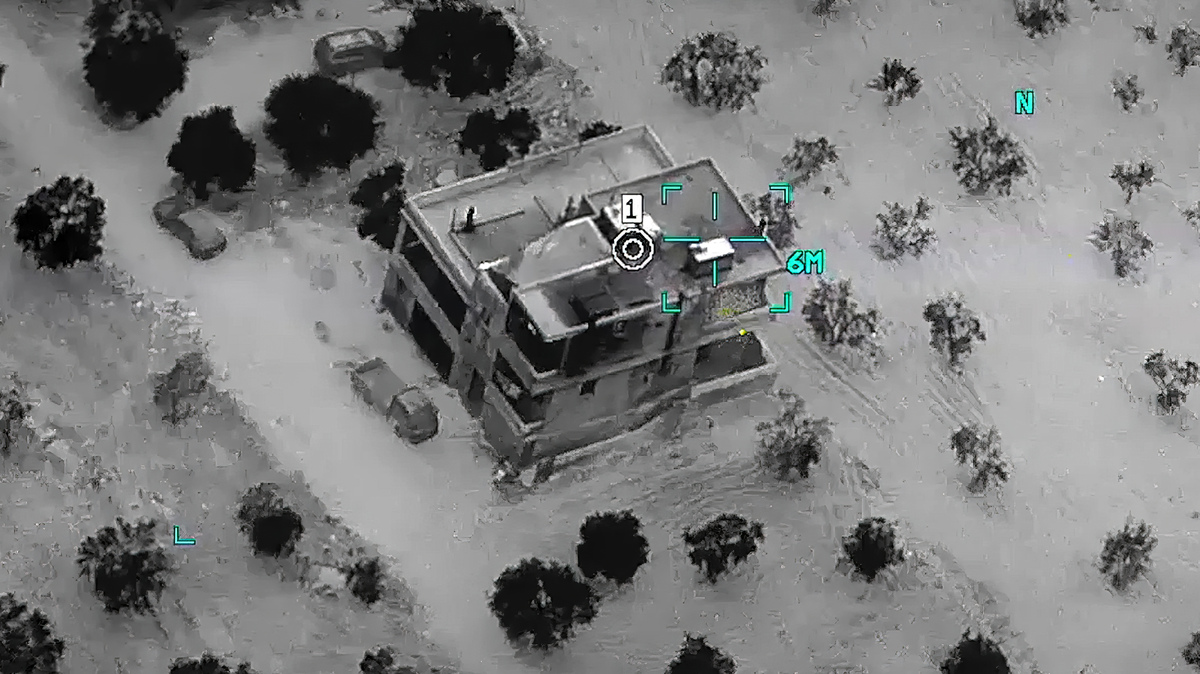
This image from video provided by the Department of Defense and released on Thursday shows the compound where Abu Ibrahim al-Hashimi al-Qurayshi, leader of the Islamic State Group, later died in a raid in Syria's northwestern Idlib province. Department of Defense via AP hide caption

This image from video provided by the Department of Defense and released on Thursday shows the compound where Abu Ibrahim al-Hashimi al-Qurayshi, leader of the Islamic State Group, later died in a raid in Syria's northwestern Idlib province.
Department of Defense via APLast Thursday morning, before dawn, U.S. special troops arrived at a house in Syria to capture the ISIS leader Abu Ibrahim al-Hashimi al-Qurayshi alive. Two hours later, he was dead after detonating an explosive that also killed the lives of at least 13 others.
The U.S. opted for a ground attack in an effort to protect civilians but the mission didn't go as planned. Pentagon Press Secretary John Kirby explains some of the complications.
And Charles Lister, a senior fellow at the Middle East Institute, explains what might happen now that the leader of ISIS is dead.
Email us at
This episode was produced by Lee Hale. It was edited Fatma Tanis. Additional reporting by NPR's Brian Naylor. Our executive producer is Cara Tallo.

 Live Radio
Live Radio